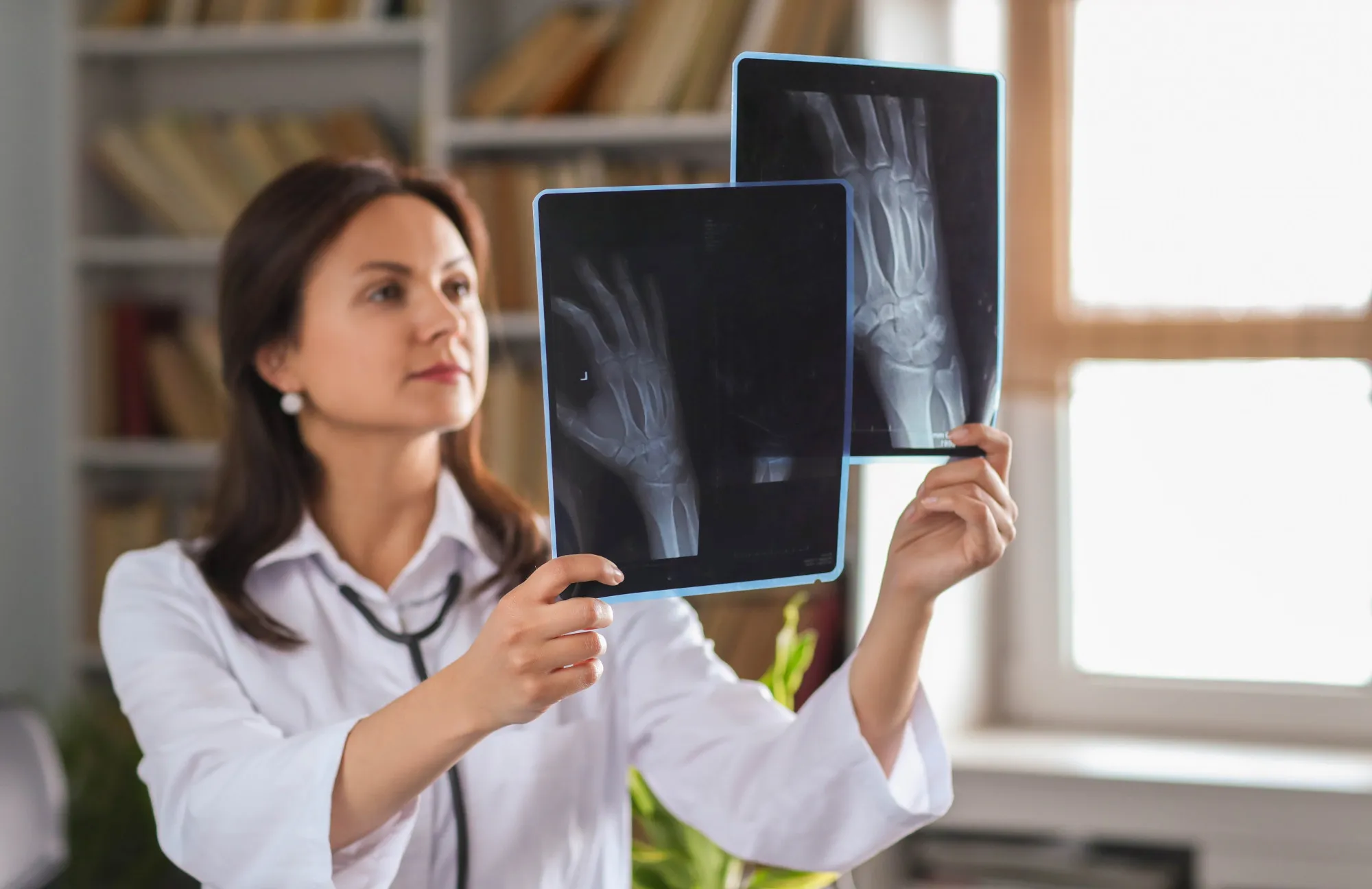The precision and accuracy of measuring rotational movements in the complex structures of the human forearm have long been an aspiration in the field of biomechanics and orthopedic surgery. A groundbreaking study, conducted by a research team led by Tsuyoshi Murase from the Department of Orthopaedic Surgery at the Osaka University Graduate School of Medicine, has paved the way for critical advancements in this domain. This article will delve deep into the specifics of their research, its implications, and how it can change the landscape of 3D motion analysis for the better.
Published in the 2019 May 24 issue of the ‘Journal of Biomechanics’ with the digital object identifier (DOI) 10.1016/j.jbiomech.2019.04.017, this study sets a benchmark in the domain of medical imaging and biomechanical analysis. The research describes a novel method for analyzing 3D forearm rotational motion through the use of biplane fluoroscopic intensity-based 2D-3D matching, highlighting its benefits in terms of high temporal and spatial resolution motion analyses with limited radiation exposure.
Background of the Study
Traditionally, gaining insights into the 3D rotational movement of the forearm has been a complex task, largely because of the intricacies of capturing high-speed motion with the fidelity required for accurate clinical assessment. Current techniques, such as radiostereometric analysis (RSA), although considered the gold standard, have limitations, particularly when it comes to detecting quick joint dislocations which are crucial symptoms in various orthopedic pathologies.
The New Biplane Fluoroscopy Technique
To overcome these hurdles, the research team developed and validated a cutting-edge technique that uses automatic registration processing powered by an evolutionary optimization strategy. This method involved capturing forearm rotation using biplane fluoroscopy at a rate of 12.5 frames per second, in conjunction with a computed tomography (CT) scan at a single static position.
The accuracy and efficiency of this technique were meticulously tested using an arm phantom embedded with eight stainless steel spheres, each with a diameter of 1.5 mm, to simulate the forearm’s anatomical landmarks. The results obtained from the biplane fluoroscopic method were then compared to those acquired through RSA.
Key Findings and Results
The study revealed remarkably low rotational errors for the radius and ulna when utilizing the 2D-3D matching method, with values of 0.31 ± 0.35° and 0.32 ± 0.33°, respectively. In addition, translational errors were also minimal, clocking in at 0.43 ± 0.35 mm for the radius and 0.29 ± 0.25 mm for the ulna. When comparing to a simulated multiple CT method – another common approach for motion analysis – the biplane fluoroscopic method showed a superior ability to detect joint dislocations and sudden movements.
The researchers further conducted a time resolution analysis by measuring radiohumeral joint motion in a patient with posterolateral rotatory instability. The comparison between 2D-3D matching and the multiple CT method demonstrated that, while the latter could not detect quick motions during joint dislocations, the former excelled in capturing such acute events.
Implications for the Medical Field
The success of this research is promising for the medical community, especially for those specializing in orthopedics and sports medicine. With the ability to monitor and evaluate forearm and joint motions accurately, diagnoses of conditions like ligament injuries and instability can be made with greater confidence.
Clinicians could significantly benefit from this tool, as it facilitates a better understanding of the pathokinematics of the forearm and elbow joints, potentially leading to more effective treatment plans and rehabilitation strategies. Furthermore, the decreased radiation exposure ensures patient safety, a critical consideration in repeated diagnostic imaging.
For researchers and developers working on robotic arms or other biomechanically informed devices, this study provides a reliable basis that could assist in design improvements and functional enhancements, ensuring that these devices mimic human motion with increased precision.
Copyright and Author Information
This study comes with the full copyright protection conferred upon its original publication in Elsevier Ltd. The research was led by Shingo Abe from the Department of Orthopaedic Surgery at Osaka University Graduate School of Medicine and Toyonaka Municipal Hospital, along with a dedicated team comprising of Yoshito Otake, Yusuke Tennma, Yuta Hiasa, Kunihiro Oka, Hiroyuki Tanaka, Atsuo Shigi, Satoshi Miyamura, Yoshinobu Sato, and lastly, Tsuyoshi Murase, whose electronic address is provided as tmurase-osk@umin.ac.jp.
The promising findings of this research are becoming available to orthopedic surgeons and biomechanics researchers worldwide, offering new insight and technical capabilities for 3D motion analysis. It stands out as a noteworthy contribution to the ever-evolving fields of biomechanics and medical imaging.
Keywords
1. Forearm Rotational Motion Analysis
2. Biplane Fluoroscopy Technique
3. High-Resolution Motion Analysis
4. 3D Forearm Imaging
5. Orthopedic Diagnostic Imaging
References
Abe, S., Otake, Y., Tennma, Y., Hiasa, Y., Oka, K., Tanaka, H., Shigi, A., Miyamura, S., Sato, Y., & Murase, T. (2019). Analysis of forearm rotational motion using biplane fluoroscopic intensity-based 2D-3D matching. Journal of Biomechanics, 89, 128-133. doi: 10.1016/j.jbiomech.2019.04.017
1. Moro-oka, T., Hamai, S., Miura, H., Shimoto, T., Higaki, H., Fregly, B. J., Iwamoto, Y., & Nakashima, Y. (2007). Can magnetic resonance imaging–derived bone models be used for accurate motion measurement with single-plane three-dimensional shape registration? Journal of Orthopaedic Research, 25(7), 867-872. doi: 10.1002/jor.20389
2. Hiasa, Y., Otake, Y., Takao, M., Ogawa, T., Sugano, N., Sato, Y., & Murase, T. (2018). Validation of 3D reconstruction accuracy of the femurs from biplane radiography with EOS system using a CT-based reference. Journal of Biomechanics, 77, 217-223. doi: 10.1016/j.jbiomech.2018.06.006
3. Cutti, A. G., Ferrari, A., Garofalo, P., Raggi, M., Cappello, A., & Ferrari, A. (2005). ‘Outwalk’: a protocol for clinical gait analysis based on inertial and magnetic sensors. Medical & Biological Engineering & Computing, 47(1), 17-25. doi: 10.1007/s11517-008-0427-2
4. Banks, S. A., & Hodge, W. A. (1996). Accurate measurement of three-dimensional knee replacement kinematics using single-plane fluoroscopy. IEEE Transactions on Biomedical Engineering, 43(6), 638-649. doi: 10.1109/10.494245
5. Martelli, S., & Pinskerova, V. (2002). The shapes of the tibial and femoral articular surfaces in relation to tibiofemoral movement. The Knee, 9(4), 267-275. doi: 10.1016/S0968-0160(02)00017-3
